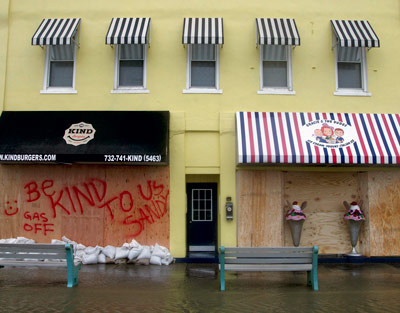 Inundations of claims following events like Superstorm Sandy have left insurance providers scrambling for ways to manage claims and owners of micro businesses wishing they'd invested in better coverage—and so-called “superstorms” are not likely to go away any time soon. Earlier this year, NASA released a report indicating that global climate change can be expected to cause weather events of increasing intensity and frequency in the coming years, bringing with them more disruptive damage. With even microbusinesses (those with 10 employees or less) relying increasingly on global supply chains, the opportunity for costly business interruptions around the world is greater than ever.
Inundations of claims following events like Superstorm Sandy have left insurance providers scrambling for ways to manage claims and owners of micro businesses wishing they'd invested in better coverage—and so-called “superstorms” are not likely to go away any time soon. Earlier this year, NASA released a report indicating that global climate change can be expected to cause weather events of increasing intensity and frequency in the coming years, bringing with them more disruptive damage. With even microbusinesses (those with 10 employees or less) relying increasingly on global supply chains, the opportunity for costly business interruptions around the world is greater than ever.
A 2012 Allianz Global Corporate and Credit study found that in the last decade, roughly 30 percent of business interruption-related losses were covered by insurance. Only about two thirds of small businesses carry business interruption insurance, making this group highly vulnerable to the financial devastation that outside events can bring.
It also means that agents and brokers who serve small and micro enterprises expose themselves to professional liability lawsuits when they fail to inform their clients about the interruption coverage options available. Educating microbusiness clients about the risks they face given the “new normal” of climate conditions and global trade is an essential task for any agent or broker with microbusiness clients.
Recommended For You
Want to continue reading?
Become a Free PropertyCasualty360 Digital Reader
Your access to unlimited PropertyCasualty360 content isn’t changing.
Once you are an ALM digital member, you’ll receive:
- Breaking insurance news and analysis, on-site and via our newsletters and custom alerts
- Weekly Insurance Speak podcast featuring exclusive interviews with industry leaders
- Educational webcasts, white papers, and ebooks from industry thought leaders
- Critical converage of the employee benefits and financial advisory markets on our other ALM sites, BenefitsPRO and ThinkAdvisor
Already have an account? Sign In Now
© 2025 ALM Global, LLC, All Rights Reserved. Request academic re-use from www.copyright.com. All other uses, submit a request to [email protected]. For more information visit Asset & Logo Licensing.








